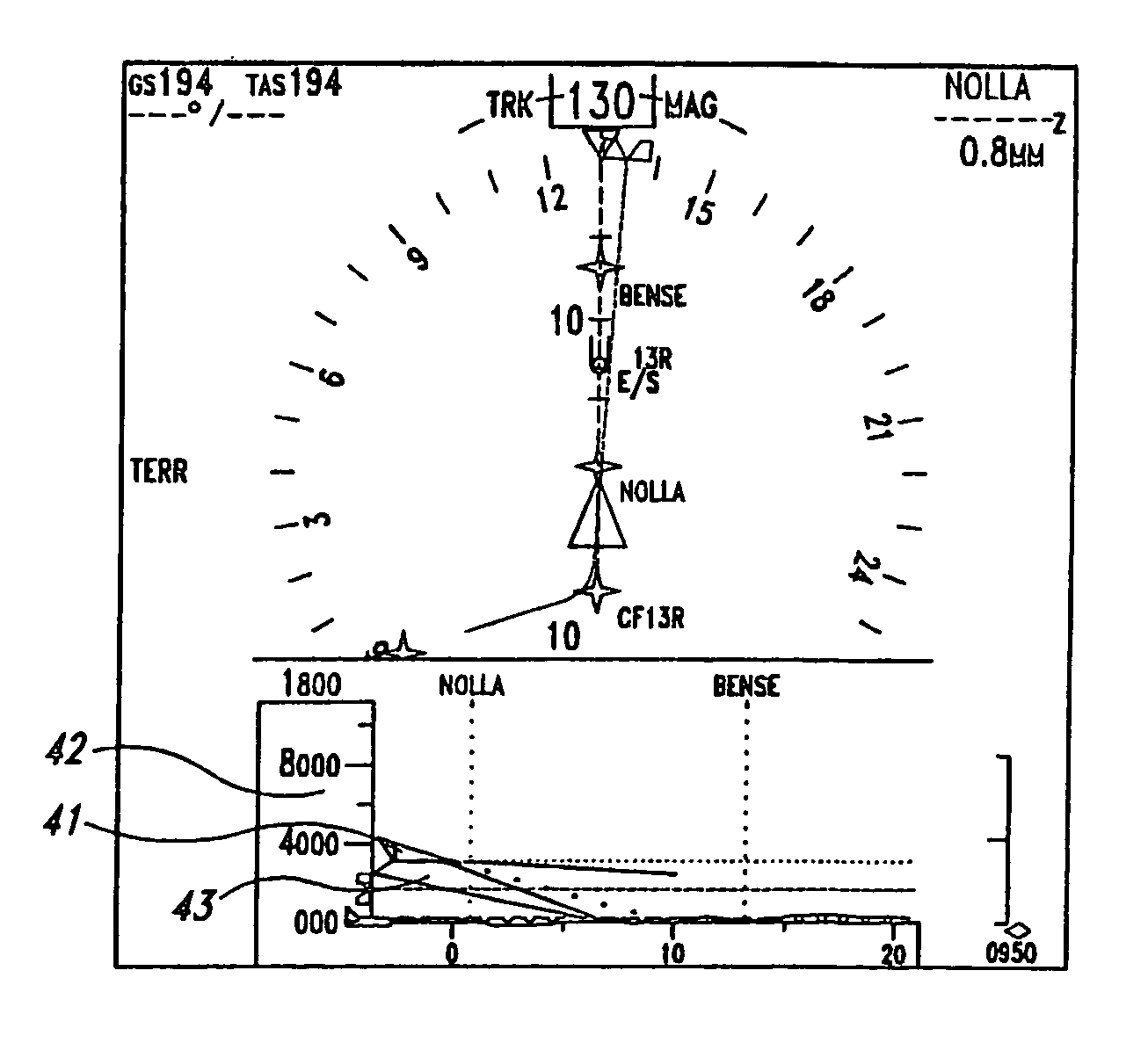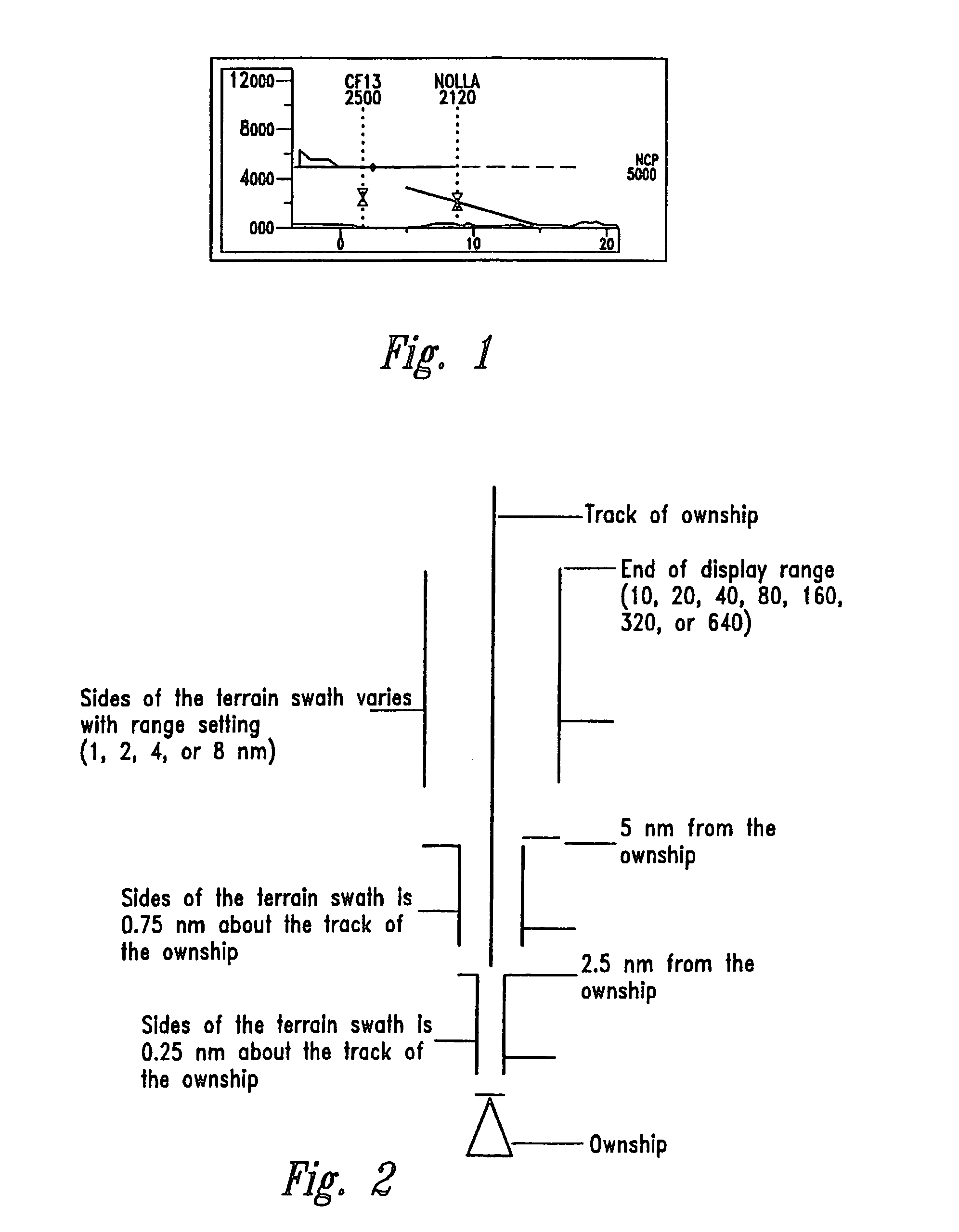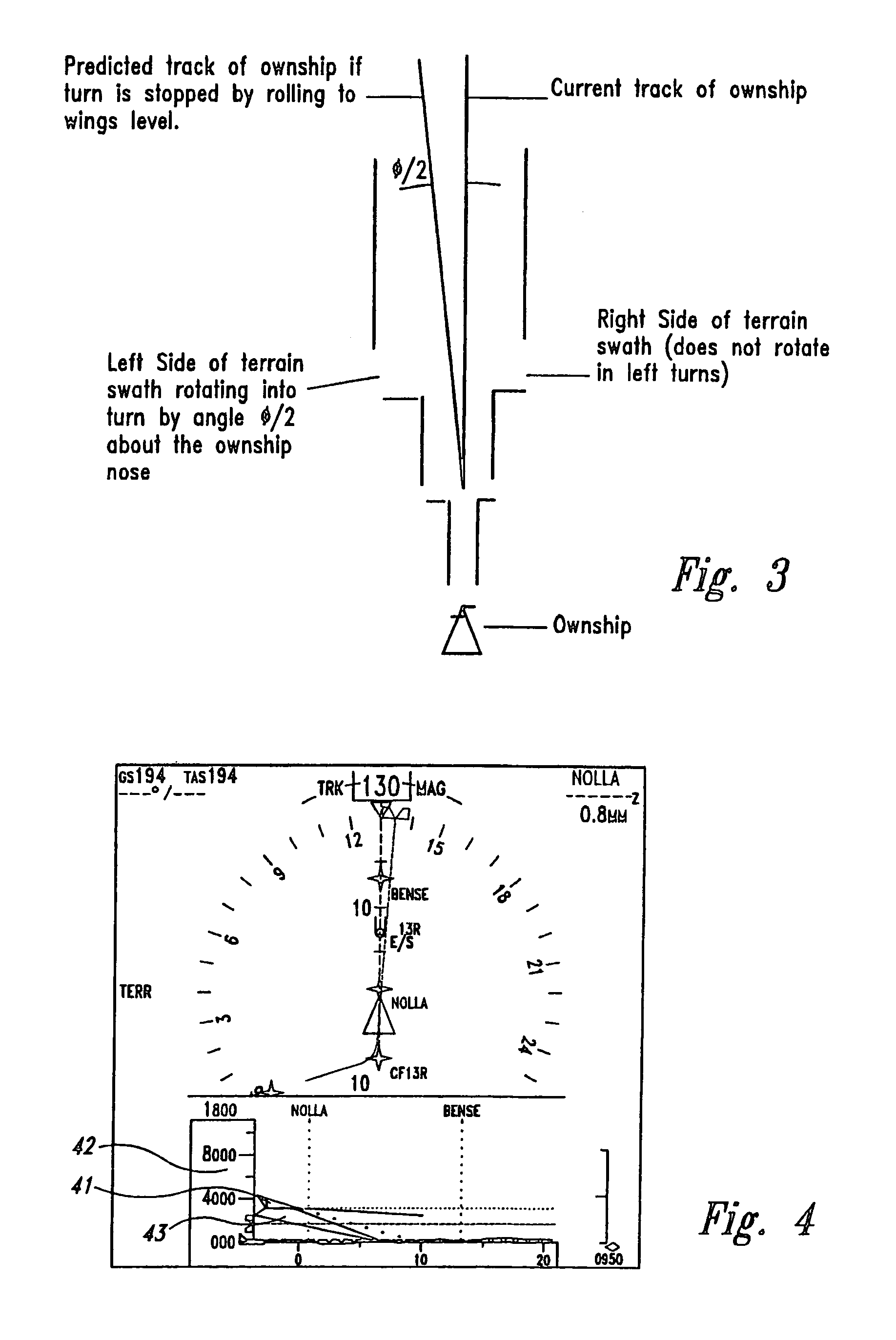Vertical situation display terrain/waypoint swath, range to target speed, and blended airplane reference
a technology of vertical situation and plane reference, applied in the direction of process and machine control, instruments, navigation instruments, etc., can solve the problems of requiring interpretation, affecting the accuracy of the contour map, and unable to provide a general awareness of the height of the surrounding terrain, so as to avoid collisions with the terrain and achieve more efficient and safe landing approaches.
- Summary
- Abstract
- Description
- Claims
- Application Information
AI Technical Summary
Benefits of technology
Problems solved by technology
Method used
Image
Examples
Embodiment Construction
[0023]The flight information display of the first aspect of the invention specifies a region in front of the aircraft to show terrain, waypoints and runways, on a vertical profile display. The source of the information to generate the profile of the terrain display may come from, but is not limited to, an on-board computer having a database of topographical information or a ground mapping radar. A Vertical Profile Display (VPD), provides a view of the vertical plane along the track of the aircraft (see FIG. 1), and may also display other information such as data on aircraft performance or target altitude information.
[0024]The terrain depicted on the display is the highest terrain that is within a specified swath of terrain along the direction of the airplane's track. Specifically, the terrain value depicted at any given distance from the airplane symbol is the maximum terrain height along an arc at that given distance centered on the airplane and bounded by the edges of the swath. T...
PUM
 Login to View More
Login to View More Abstract
Description
Claims
Application Information
 Login to View More
Login to View More - R&D
- Intellectual Property
- Life Sciences
- Materials
- Tech Scout
- Unparalleled Data Quality
- Higher Quality Content
- 60% Fewer Hallucinations
Browse by: Latest US Patents, China's latest patents, Technical Efficacy Thesaurus, Application Domain, Technology Topic, Popular Technical Reports.
© 2025 PatSnap. All rights reserved.Legal|Privacy policy|Modern Slavery Act Transparency Statement|Sitemap|About US| Contact US: help@patsnap.com



